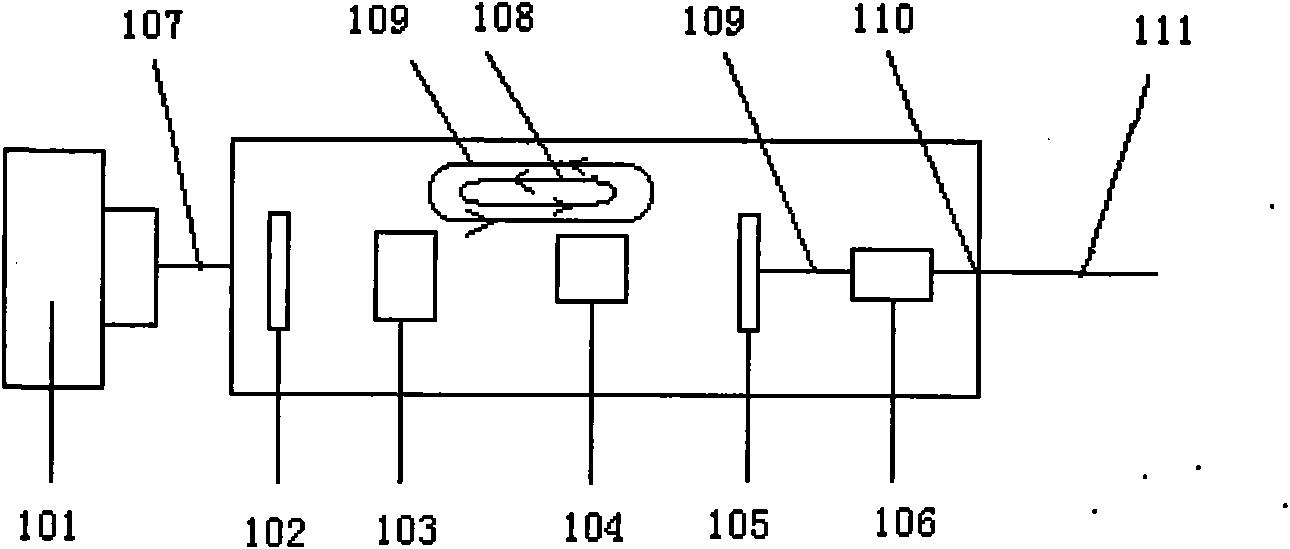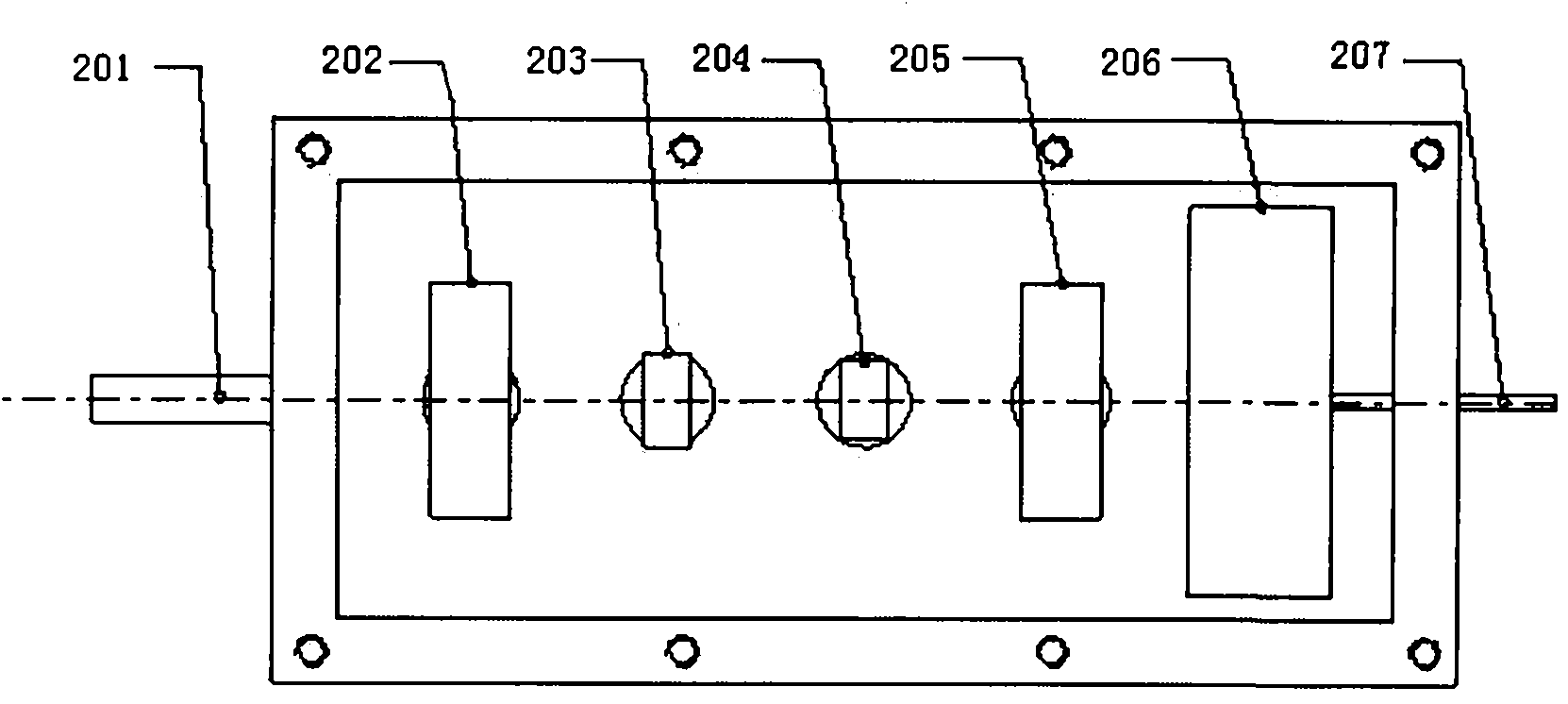765nm-780nm pulse laser for raman spectrum analysis
A technology of pulse laser and Raman spectroscopy, which is applied in the field of optoelectronics, can solve the problems of few light sources, high price, and bulky volume, and achieve the effects of good beam quality, improved stability, and small spot size of the fiber output
- Summary
- Abstract
- Description
- Claims
- Application Information
AI Technical Summary
Problems solved by technology
Method used
Image
Examples
Embodiment 1
[0014] Embodiment one: if figure 2 As shown, by semiconductor laser diode (201), using pulse modulation power supply, end-pumped laser gain medium size is 2x2x3 erbium-doped phosphate glass (203), S1: HT-980nm, AR-1560 (+ / -20nm) & 780 (+ / -10nm), to generate 1520nm-1560nm laser, through the size 2.5x3x1.5KTP frequency doubling crystal (204), S1, S2: AR-1550 / 775nm, in the reflection mirror (202) and the output mirror (205) Resonance occurs to generate frequency-doubled light of 760nm-780nm, which is finally output through optical fiber coupling (206). In the experiment, a laser with a repetition frequency of 1kHz, a single pulse energy of 3uj and a pulse width of 20ns was obtained.
Embodiment 2
[0015] Embodiment two: if image 3 As shown, by semiconductor laser diode (301), using pulse modulation power supply, end-pumped laser gain medium size is 2x2x3 erbium-doped phosphate glass (303), S1: HT-980nm, AR-1560 (+ / -20nm) & 780 (+ / -10nm), generate 1520nm-1560nm laser, through the size 2.5x3x1.5KTP frequency doubling crystal (304), S1, S2: AR-1550 / 775nm, in the reflector (302) and the output mirror (305) Resonance occurs to generate frequency-doubled light of 760nm-780nm, which is finally output through optical fiber coupling (306). In the experiment, a laser with a repetition frequency of 1kHz, a single pulse energy of 3uj and a pulse width of 20ns was obtained. The frequency is selected through the etalon (308) outside the cavity to realize single-wavelength modulation.
PUM
 Login to View More
Login to View More Abstract
Description
Claims
Application Information
 Login to View More
Login to View More - R&D
- Intellectual Property
- Life Sciences
- Materials
- Tech Scout
- Unparalleled Data Quality
- Higher Quality Content
- 60% Fewer Hallucinations
Browse by: Latest US Patents, China's latest patents, Technical Efficacy Thesaurus, Application Domain, Technology Topic, Popular Technical Reports.
© 2025 PatSnap. All rights reserved.Legal|Privacy policy|Modern Slavery Act Transparency Statement|Sitemap|About US| Contact US: help@patsnap.com



